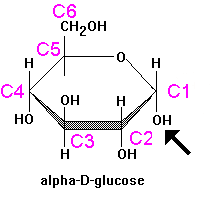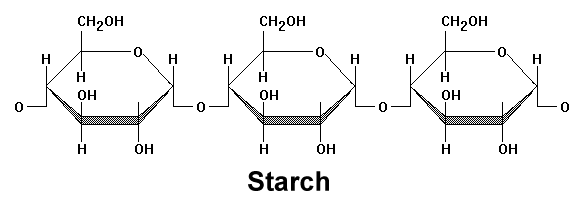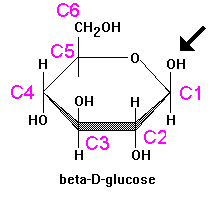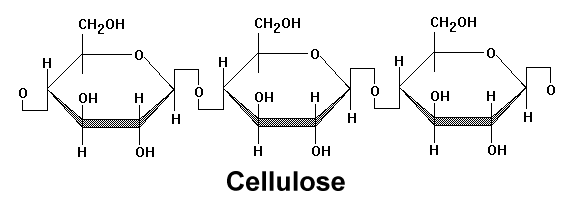

| Degu Myths |
Degu Myths
|
"Degus cannot have sugar" |
The "myth" that Degus cannot metabolize any sugar at all, including natural sugars in fruits, has persisted on the internet over the past decade or so. Unfortunately, there is a lot of misinformation on the internet and in pet stores regarding Degus and diabetes, and many Degu owners tend to over-generalize by advocating the removal of ALL sugar in the diet, including going to the ridiculous extreme of rejecting name brand Chin & cavy pellets [ie., in North America, Purina, Masterfeeds, Shur-Gain, etc] because they may have relatively minor amounts of processed sugar and/or molasses. This myth is not accurate.
Domestic Degus [a group of 10 or so] were initially brought to North America for diabetes research at M.I.T. because their natural diet is low [but not devoid] in sweet food items. The presumption was that such animals would demonstrate exaggerated insulin responses to sudden and/or high sugar intakes. However, Degus are not chronically nor congenitally diabetic and so are not intolerant of dietary sugar. For diabetes to be triggered, an animal must be exposed to a high concentration of sugar [relative to its ability to metabolize it] over a prolonged period. It is more constructive to consider healthy Degus in the same manner as pre-diabetic humans [that is, they have a family history of diabetes but don't have diabetes themselves] . A balanced diet and healthy, active lifestyle will prevent the triggering of diabetes.
It is almost a physical impossibility for a natural group or species of mammal to survive without the ability to metabolize sugar and various sugar compounds, including starches and cellulose. Starch digestion in the digestive tract is quite straightforward. Starches use alpha-D-glucose units joined via carbons 1 & 4 [pink labels in the images below] on adjacent glucose units which enable starches to assume three dimensional spiral/helical shapes. Mammals produce the necessary enzyme, amylase. to break the alpha 1,4 glycosidic bonds between the glucose units of starches. Intermediate breakdown products such as maltose and amylose cannot be absorbed across the intestinal wall into the bloodstream and so must await further enzymatic processing by amylase into individual glucose units in the intestines.

|

|
Cellulose, which comprises approximately 40-50% of the dry weight of most vegetation, is constructed from glucose units as well. Where cellulose and starches differ is the nature of the glycosidic linkages between carbons 1 and 4 on adjacent glucose molecules. The hydroxyl group [OH] on carbon 1 can assume 2 positions: downwards for alpha-D-glucose and upwards for beta-D-glucose. [Refer to the arrows in the images of alpha-D-Glucose and beta-D-Glucose] Both are anomers of each other and have no functional difference as far as cellular respiration is concerned. Cellulose uses beta-D-glucose units. This causes every second glucose unit to reverse its orientation, thereby promoting a linear shape with no side branches. Mammals lack the enzyme, cellulase, required to cleave the beta 1,4 glycosidic linkages. Accordingly, they [typically herbivores and to some extent omnivores] rely upon a bacterial culture either in the stomach [in ruminants] or intestines and/or caecum [in hindgut/caecal fermenters] to breakdown the cellulose into glucose units. As for intermediate breakdown products of cellulose [that is, amylose chains and maltose] , they are not relevant to the animal's metabolism since polysaccharides are not absorbed across the intestinal wall into the bloodstream and must await further processing into individual glucose units while still in the intestines.

|

|
However, the body does not distinguish the source of these sugars once they have entered the bloodstream. The blood sugar [glucose] level is regulated by insulin production in the pancreas. The sugars are then utilized in the Kreb's cycle to produce energy within each cell.
The only functional difference between ingested sugar and complex carbohydrates is the RATE of absorption into the bloodstream. Since sucrose is rapidly cleaved by amylase and its glucose units are quickly absorbed into the bloodstream, significant amounts of pure sugar will typically cause a sudden spike in blood glucose levels [hyperglycemia] which in turn triggers an exaggerated insulin production response. This then leads to a subsequent crash in blood glucose levels [hypoglycemia] followed by a drop in insulin production, then another rise in blood glucose levels, and so on. The larger the dose of sugar, the greater will be the oscillations in blood glucose levels. Some extreme oscillations can lead to unconsciousness. Due to the longer processing time, the presense of complex carbohydrates along with dietary sugar will moderate the hyperglycemic response and blood glucose level oscillations.
Although Degus have a lower tolerance for sudden, large quantities of sugar and, for some individuals, a possible genetic predisposition towards developing diabetes, they nevertheless still possess the ability to metabolize some sugar, just like humans with family histories of diabetes. In fact, here is what the American Diabetes Association states about sugar-containing foods for diabetic humans at http://www.diabetes.org/nutrition-and-recipes/nutrition/faqs.jsp#SugarFoods :
2. Can I eat foods with sugar in them?The key to managing hyperglycemic responses in Degus is to ensure that dietary sugar is properly balanced by the presense of complex carbohydrates. Accordingly, it is best to MINIMIZE [as opposed to eliminating] sugar-containing treats [ie., no more than a few times per week, for instance] and to not worry about the constituents [such as molasses] of processed feeds such as Chin, Rabbit or Cavy pellets. Finally, one should ensure that the Degus receive plenty of exercise and activity.
For almost every person with diabetes, the answer is yes! Eating a piece of cake made with sugar will raise your blood glucose level. So will eating corn on the cob, a tomato sandwich, or lima beans. The truth is that sugar has gotten a bad reputation. People with diabetes can and do eat sugar. In your body, it becomes glucose, but so do the other foods mentioned above. With sugary foods, the rule is moderation. Eat too much, and 1) you'll send your blood glucose level up higher than you expected; 2) you'll fill up but without the nutrients that come with vegetables and grains; and 3) you'll gain weight. So, don't pass up a slice of birthday cake. Instead, at the next meal, eat a little less bread or potato and be sure to take a brisk walk to burn some calories.
If one is so inclined, one can actually measure a Degu's response to ingestion of sugar-containing items either via a blood test or urine sample. Urine sampling kits for diabetics are readily available at drug stores and easily employed. The urine test kits are, of course, calibrated for humans. Since they only provide an approximate and indirect indication of high blood sugar, a high reading would/should prompt the patient to seek an actual blood test. In other species, these urine test kits can provide a QUALITATIVE indication [rather than a QUANTITATIVE one since normal blood sugar levels are species-specific] of blood sugar level changes. One can still use them to roughly track changes in one individual over time or between individuals at the same time.
While I do not advocate feeding Degus sugary foods and treats and personally almost never give treats specifically to my Degus [some live with Chins and so get the occasional raisin, the little sneaks!] , it is not a disasterous situation if some owners give treats containing small amounts of sugar in extreme moderation [as subjective as that term may be] . Their Degus won't instantly become diabetic. Of course, many pet owners forget that what seems like a little amount to us is a huge amount [both from a body size and absolute concentration perspective] for a small animal from a non-fruit eating lineage and can inadvertently trigger a hyperglycemic response. In contrast, humans, like many fruit-eating species [monkeys, Sugar Gliders, fruit bats, etc] , have, on average, an extraordinary high tolerance for high-sugar foods. For diabetes to be triggered, an animal must be exposed to a high concentration of sugar [relative to its ability to metabolize it] over a prolonged period. Furthermore, neither factor by itself is sufficient. Naturally, lifestyle factors such as obesity and inactivity can certainly be contributing factors. It would appear that treats more typically fill the psychological needs of the pet owner rather than that of the pet. [In other words, treats are not necessary.]
As an extension of the sugar myth, some Degu owners also hold a negative view regarding the presense of seeds/grains in Degu diets due to the higher starch content. However, numerous owners have noticed that Degus are not overly enthusiastic with a pellet-only [Chin or otherwise] diet but do enjoy grains/seeds. I have determined that while Degus will do alright on a pellet and hay diet [ie., my first colony] , they [ie., my second colony] thrive on a diet consisting of as much as 33% grains/seeds and 67% pellets [the actual composition of each is listed at https://degumania.tripod.com/degu_diet.html ] plus ad libitum hay. Specifically, my Degus would be generally healthier overall and would have numerically larger litters, more litters over the course of, for example, a year, and healthier kits as compared to my first colony. [Unfortunately, I no longer have the relevant records so please accept my word on this.] Furthermore, there were NO cases of cataracts nor diabetes with the grain & pellet diet. Nor did they have an obesity problem [see https://degumania.tripod.com/degu_weights.html ] : if anything, they were slightly lean in comparison to the only other major Degu weighing [that I know of] by the Deguologist aka Amber Richardson http://www.geocities.com/degulandsociety/degulandweightsNov2001.htm .
Some may counter that this does not correspond to field observations of the natural diet for Degus. However, the natural diet is not necessarily the optimal diet. There are many examples of species growing larger, living longer, and having greater fecundity on "artificial" diets: it would seem that in some cases, the natural diet is the best the animal could do given the characteristics of that specific environment and that it was/is serving as a limiting factor. Humans are a prime example of this but we have also seen this with dogs, cats, Chins, and so on. [Of course, domestic situations also offer other life-enhancing benefits such as lower predation and stress as well as the availability of veterinary treatment which complicates this analysis.] Furthermore, the various quoted "natural" diets are likely locale-specific as Degus do live across a broad vertical expanse of the Andes foothills which would therefore be characterized by heterogeneous environments. Finally, while one natural diet may consist of, for example, "...42% different grasses...", it is possible for Degus to selectively harvest only certain parts of grass such as the seed heads.
Is mine the definitive diet for Degus? By no means. Any variations in between mine and a no-seed/grain diet are equally valid PROVIDED the relevant positive health indicators are evident [ie., good longevity, fecundity, healthy litters plus the absence of cataracts, diabetes, obesity, etc] . Degus, like most animals, have considerable adaptive reserve.
|
"Degus' tails will fall off if you touch them" |
The "tail problem" is a common feature of many rodents including Gerbils, Degus, Chins, etc. However, it requires significant amount of tractive force to cause the skin of the tail to slough off. The sloughing off of the external sheath of the tail presumeably originated as an escape mechanism for many rodents. Once the skin comes off, the exposed portion of the tail atrophies and does not regenerate.
If it is necessary [and sometimes it is] to pick up a Degu in such a manner, the key requirement is to grasp the tail at the BASE. In this case, grasping the tail can be used to position the Degus so that the other hand can be scooped under the belly. Grasping the tail past the midpoint makes sloughing of the skin sheath quite probable. Furthermore, I cannot recommend tail-grasping to those not familiar with handling rodents.
On the otherhand, I've never had a section of the tail slough off among any of my Chins [peak population about 130] only once with my Degus [peak population of 181] and twice with my Gerbils [peak population of 4 dozen].
|
"You can't put male Degus together" |
It is a myth that male Degus can not get along. The myth originates from applying the behaviour of other animals and is simply not applicable to Degus [nor, in my personal experience, to Chinchillas, Gerbils, DeerMice, Sugar Gliders, etc, for that matter]. On average, male Degus are just as compatible as female Degus .
With respect to having the females' cage near the males, opinions will vary. However, I have numerous all-female cages next to all-male cages with no problems among the males.
There are several management principles involved here:
|
"Degus are a type of rabbit" |
There seems to be a lot of speculation about that, with rumours spreading across the internet. Officially, Degus are still members of the suborder Caviomorpha in the Order Rodentia. The taxonomic status of Caviomorphs is, naturally, a subject of considerable debate among scientists. The official status of any species is established by the International Commission on Zoological Nomenclature [ICZN] http://www.iczn.org/ . [See also http://lionfish.ims.usm.edu/~musweb/icz_xviii/ICZNMeeting.html and http://www.globalzoology.org .]
As a group, Caviomorphs, including Degus and Chins, differ from the rest of the Rodents to a significantly less extent than Lagomorphs [Hares, Rabbits and Pikas].
Caviomorphs lack several distinctive anatomical features of Lagomorphs including fundamental differences in skull morphology. [Among mammal species, the most salient morphological distinguishing characteristics are generally confined to the head and teeth. This is because food consumption and associated behaviours such as foraging and/or hunting are the most significant natural selection forces. In contrast, the rest of the mammalian body is less differentiated other than gross (and undiagnostic) aspects such as size and length.] Specifically, Lagomorphs possess a second set of tiny incisors [called "peg incisors"] immediately behind the main upper incisors. A less robust skull structure including the presence of extensive "air pockets" with the facial bones is another unique Lagomorph characteristic. Finally, in male Lagomorphs, the scrotal sac is anterior to the penis [just like in Wallabies and Kangaroos], and the penis lacks a baculum ["penis bone"]. Other notable, although not necessarily exclusive, features of Lagomorphs include 5 digits on the front paws, fur on the soles of the feet, and absent or vestigial tails.
Caviomorphs possess none of these traits.
Many researchers have been re-classifying animal species on the basis on DNA analysis but this too is not entirely accurate. Specifically, much of the DNA analysis is based upon mitochondrial DNA which is passed along only along maternal lines [ie., via the ovum]. Thus, a lineage would cease if a female has only male offspring. Furthermore, the mutation rate for mitochondrial DNA has been shown to differ from nuclear DNA with the result that the time of splitting of lineages being somewhat under- or over-estimated.
Nevertheless, there is some merit in re-examining Degu classification. Rabbits, Hares and Pikas received their own category [Order Lagomorpha] several decades ago, mainly on the basis of the "peg incisors" and skull morphology [as discussed above]. South American marsupials [which also includes the Virginia Opossum in North America] are recognized as being distinct from the Australian-Indonesian marsupials. Thus, one could also make a legitimate argument for according ALL South American Rodents [their current Suborder is called "Caviomorpha"] their own Order status, Order Caviomorpha, in parallel to the Order Rodentia. For one, it is known from the fossil record that Caviomorphs have been evolutionarily separated from the rest of the rodents for the past 17-25 million years.
This reclassification I can support, pending suitable evidence. I doubt a strong case can be made for reclassifying specific Caviomorph species [ie., Degus] or even Caviomorphs as a whole as Lagomorphs.
I'm sure the taxonomic status of Degus and other Caviomorphs will remain the topic of lively study among mammalogists in the future.
Created by
DeguMania
© 1999-2007 DeguMania & AniMania The concept, design, and all content of DeguMania and the Degu Owners Directory as well as the terms "DeguMania", "Degumania", "degumania", "Degu Mania", "Degu mania", "degu mania", "DeguManiac", "Degumaniac", "degumaniac", "Degu Maniac", "Degu maniac", "degu maniac", and any derivations thereof, is copyrighted by DeguMania and AniMania ( © 1999-2007 DeguMania & AniMania ) and may not be used without the express written permission of DeguMania and AniMania.